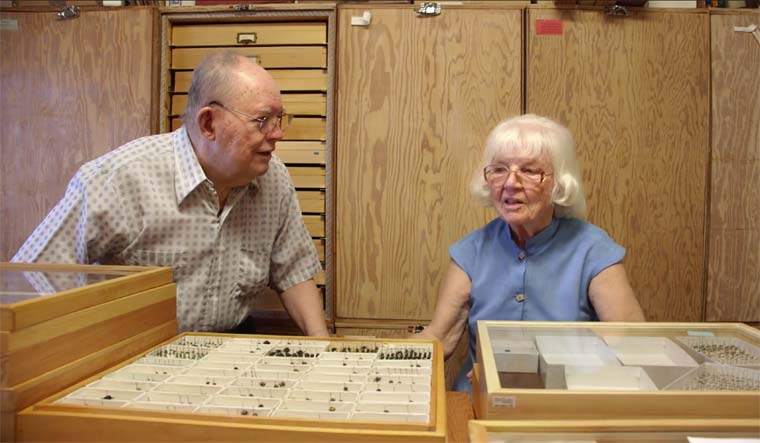
The insect 'love bug', also known as honeymoon fly or the double-headed bug, are always found in pairs. The male and the female of the species seem attached tail to tail. In the award-winning short documentary The Love Bugs, two renowned entomologists are similarly matched—with over 60 years of marriage, joint research and the world's largest private collection of insects.
Charlie and Lois O’Brien from Arizona first met in an entomology class, he a teacher and she his student. He liked weevils and she was fond of plant-hoppers. Together they romped some 70 countries to amass a collection of more than 1 million insects worth $10 million. The Love Bugs—which is part of the first virtual edition of All Living Things Environmental Film Festival (ALTEFF) from December 5—is a gentle, humorous take on an octogenarian couple, their love of nature and unstinting commitment to the study of insects.
ATLEFF has a line-up of 33 films on social and environmental issues on view till December 13. The festival, originally conceived as a physical event in Panchgani, has environmental filmmaker Mike Pandey on its advisory team. Apart from Indian films, stories from South Africa, Germany, Madagascar, US and the UK also feature in the festival.
The Love Bugs opens with Charlie and Lois at 90, struggling with failing health, preening and packing away their shiny disco ball-like insects into boxes for donation to the Arizona State University. The difficult decision to give away drawer upon drawers of carefully labelled and lovingly curated weevils and plant-hoppers is taken in their stride with touching equanimity.
"The sheer size of the collection and the diversity of insects within it fascinated me. I also loved hearing Charlie and Lois’ stories about different specimens and their characteristics and behaviors," says co-director Allison Otto who first read about the couple in an article on the National Public Radio website in 2017 after they made national headlines.
"When I filmed the insects with a macro lens, I was really able to see all of their beautiful details. Up close, some resembled miniature dinosaurs while others looked like something straight out of science fiction. It was awe-inspiring, and I developed even more of a reverence for insects," says Otto over email.
"The O’Briens were intriguing in the news article, but they were even more impressive and quirky in person," she says. The filmmakers inform that the O’Briens’ collection more than doubled the size of the university’s existing collection and they also endowed professorships for identifying and naming new species.
Charlie O' Brien passed away last year. Lois currently lives in an independent living community for seniors, in close proximity to the collection. She still enjoys displaying her drawers of insect specimens.


